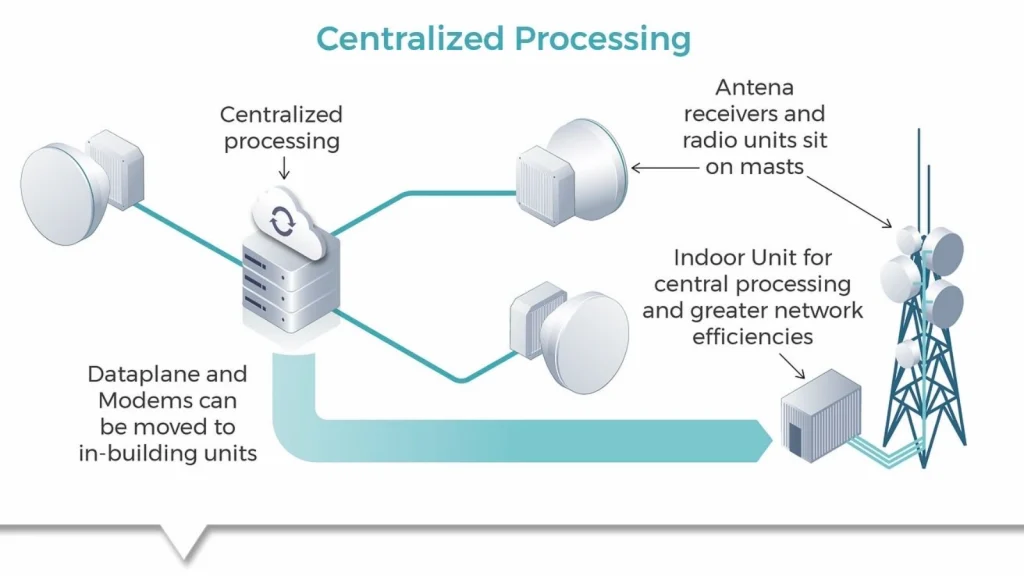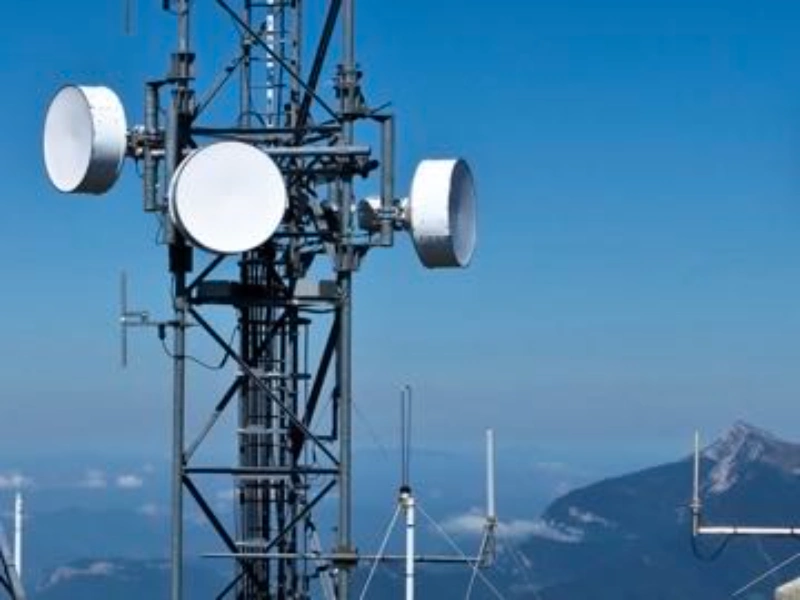- Microwave backhaul refers to the transportation of traffic (voice, video, and data) between distributed sites and a more centralised point of presence via a radio link.
- Operators can lease microwave spectrum and build networks that deliver several E1/T1s, STM1/OC3s and Ethernet services over the air, providing an instant, reliable and relatively low-cost solution to the growing global demand for backhaul capacity.
- Microwave is already the backhaul technology used by most mobile operators worldwide, and outside the US nearly 70% of backhaul traffic travels over microwave links.
As the demand for high-speed internet and seamless mobile connectivity continues to grow, understanding microwave backhaul becomes increasingly important. This blog will delve into the concept of microwave backhaul, its significance in modern communications, its advantages and disadvantages, and its role in the future of telecom networks.
Microwave backhaul involves transporting traffic (voice, video, and data) between distributed sites and a centralised point via radio links. Operators can lease microwave spectrum to build networks that deliver E1/T1s, STM1/OC3s, and Ethernet services over the air, offering a quick, reliable, and cost-effective solution for increasing backhaul capacity.
Globally, most mobile operators use microwave for backhaul, with nearly 70% of traffic outside the US relying on these links. This trend is expected to continue due to microwave’s scalability and cost advantages over leased copper lines and new fiber deployments.
Also read: China leads in global supercomputing
Understanding microwave backhaul
Microwave backhaul refers to the use of microwave radio waves to transmit data between different points in a telecommunications network. This technology is primarily used to connect remote or hard-to-reach areas to the core network, facilitating the flow of data from cell sites to the central network. Microwave backhaul is a key component of wireless networks, enabling the transmission of voice, video, and data across long distances without the need for physical cables.

How microwave backhaul works
Microwave backhaul systems use high-frequency radio waves, typically in the range of 6 GHz to 60 GHz, to transmit data over the air. These systems consist of two main components: microwave transmitters and receivers. The transmitters convert electrical signals into microwave signals, which are then sent through the air to the receivers. The receivers convert the microwave signals back into electrical signals, completing the data transmission process.
The transmission path between the transmitter and receiver is known as a microwave link. These links can span several kilometers and are usually line-of-sight, meaning there must be a clear, unobstructed path between the two points for the signals to travel effectively. This is why microwave backhaul is often used in areas with minimal physical obstructions, such as rural or mountainous regions.
Also read: The future of cloud computing: Exploring hybrid cloud
Why do we need additional backhaul?
Over the next few years, mobile carriers will transition their networks from 2G/3G radio access to 4G access technologies. These networks will need to deliver far more bandwidth to support richer applications and demand for backhaul capacity will rise geometrically. Microwave radio systems are emerging as a good way to deliver capacity without undue strain on budgets. The mobile backhaul infrastructure carries voice and data communications traffic from the access network (cell sites) to the core network. Most cell sites have been connected to the core network via E1 lines. Sometimes these lines are owned by the same company, but for many mobile operators they must be leased from a company with a competitive wireless service.
With 2Mbps of service per line, E1 lines have traditionally been used in groups to provide up to 10Mbps of backhaul capacity per cell site. This strategy has been adequate for 2G voice and GPRS or EDGE data services, but it is inadequate for 3G services such as HSPA and UMTS, and it won’t even begin to support 4G services such as LTE and Wimax.
On today’s 3G networks, devices such as the Apple iPhone are demanding far more bandwidth than earlier devices due to their heavy use of data-intensive applications. 4G services, combined with the widespread use of smartphones, will demand even more bandwidth from the mobile infrastructure. These 4G services will require 10 to 100 times as much backhaul capacity as the current E1-based infrastructure provides.
What is the business case?
Microwave backhaul offers an immediate and compelling business advantage, providing a versatile solution that helps mobile carriers adhere to tight budgets and timelines. Carriers benefit from a swift time-to-service, enabling quick responses to market changes with systems that can be deployed within hours or days. The capacity of these systems can be upgraded through software, allowing carriers to adopt a “pay as you grow” approach. For instance, starting with a low-speed link (such as 20Mbps) and scaling up to hundreds of Mbps via software license keys is both cost-effective and efficient, reducing the overall cost per Mbps as capacity increases.
Further expansion is possible through capacity aggregation, which lets carriers boost capacity to 1Gbps or more by utilising multiple radios to transmit traffic over a single link. This scalability offers additional cost benefits, as it supports both native TDM and Ethernet traffic, enabling operators to manage various types of traffic and smoothly transition to IP-centric traffic over time.
Microwave radio systems are available in both licensed and license-exempt frequencies, offering carriers the flexibility to provide interference-free service for a range of applications and data rates over distances up to 80km. This flexibility, combined with advanced interference mitigation techniques, ensures a carrier-grade service with 99.999% throughput availability – translating to less than five minutes of outage per year.

